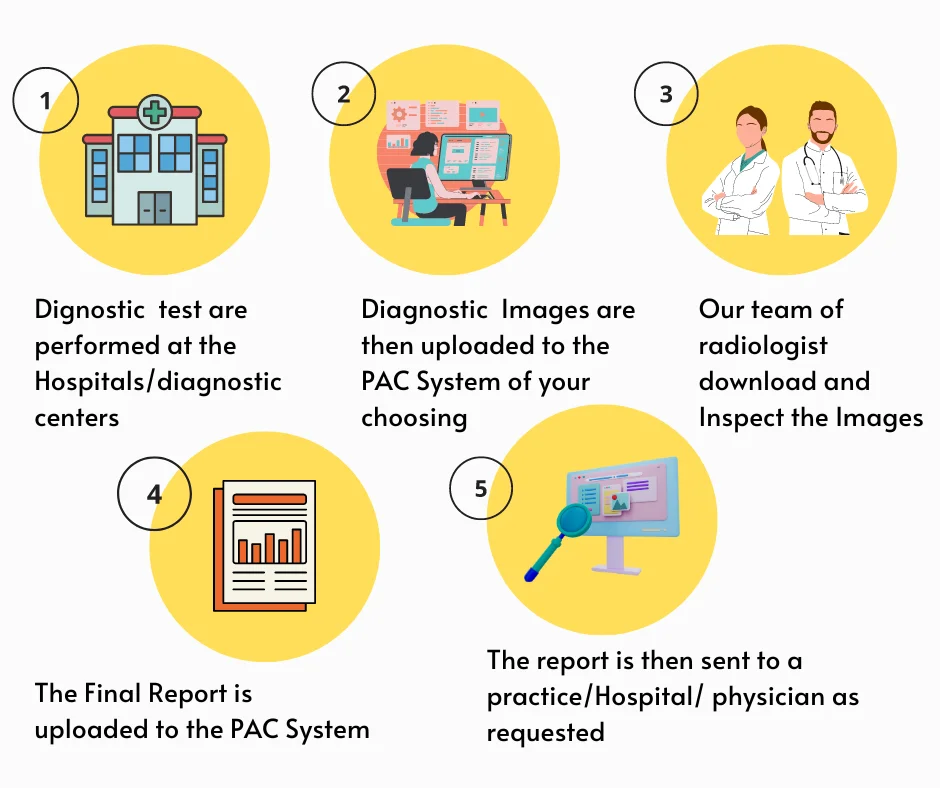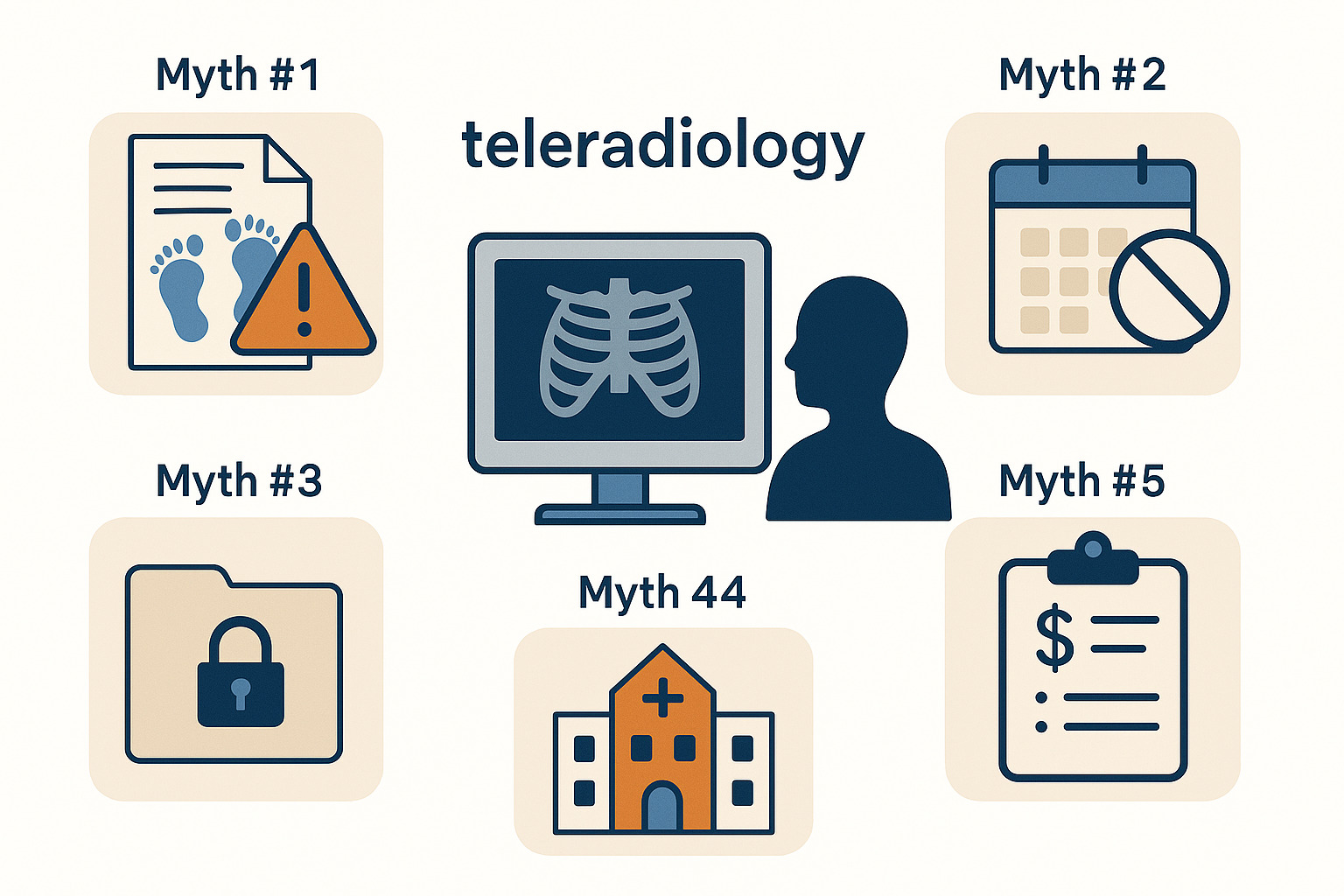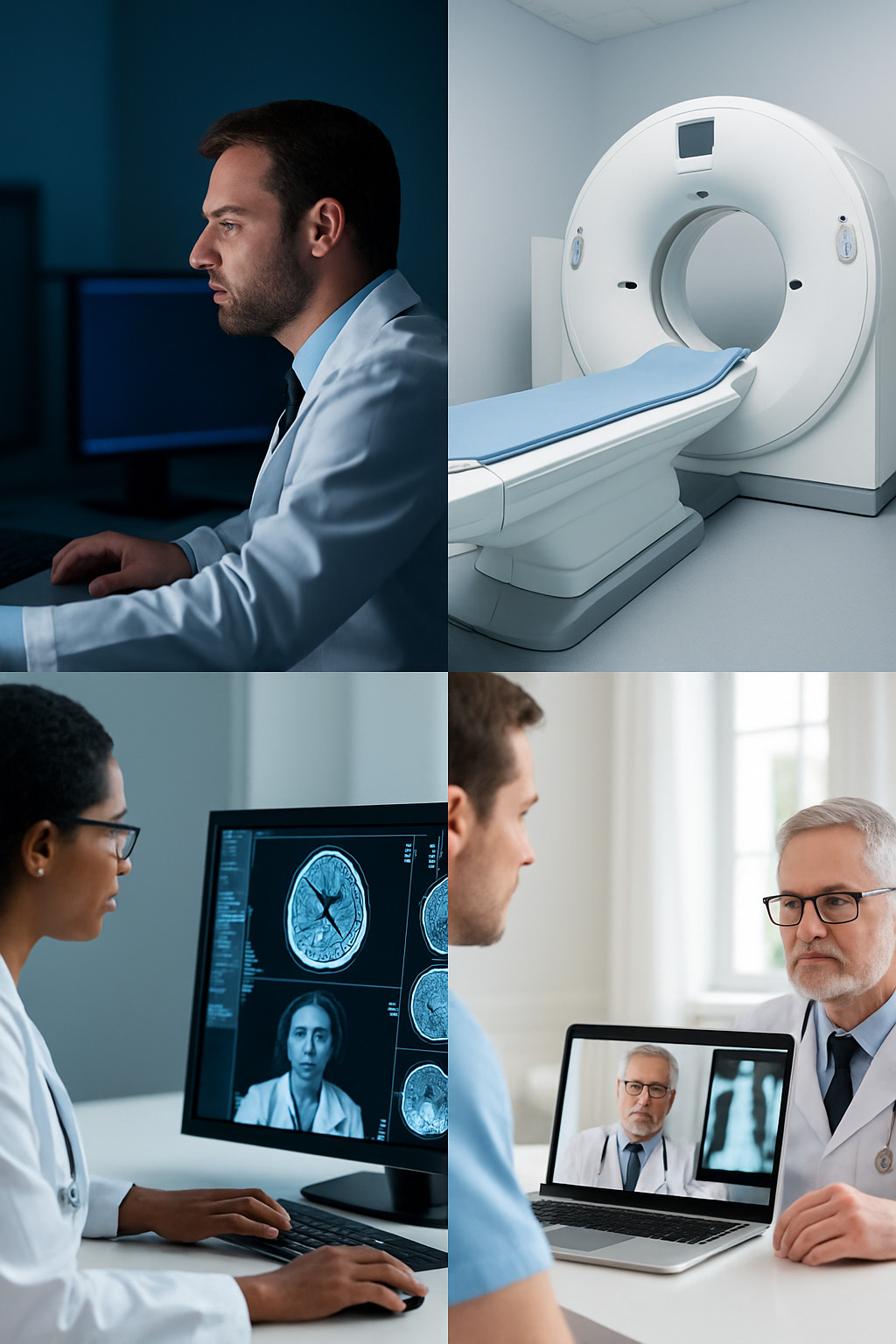Understanding Teleradiology Workflow
By oshininfotech

In today’s fast-paced healthcare environment, timely diagnosis can make all the difference in patient outcomes. That’s why many hospitals and diagnostic centers are turning to teleradiology—a system that enables radiologists to interpret medical images remotely. But to make this possible, an efficient and secure teleradiology workflow is essential.
In this blog, we’ll walk you through the typical workflow of teleradiology, explain how it enhances clinical operations, and explore how it solves some of the most pressing challenges faced by healthcare institutions.
What is Teleradiology Workflow?
Teleradiology workflow is the end-to-end process that enables the transmission, interpretation, and return of radiology reports from a remote radiologist to a hospital or diagnostic center. This involves digital imaging, data security, remote access, timely reporting, and communication with physicians.
Step-by-Step Breakdown of Teleradiology Workflow
Here’s how the process typically works:
1. Image Acquisition at the Source
Patient undergoes a scan (X-ray, CT, MRI, etc.) at a hospital or diagnostic center.
The images are captured using DICOM-compliant machines and stored in a local PACS (Picture Archiving and Communication System).
2. Secure Transmission of Images
Images are transmitted via a secure, encrypted channel to the teleradiology provider’s system.
Transmission can be automated or triggered manually, depending on the urgency.
3. Case Allocation to Radiologists
The system routes cases based on priority (STAT, emergency, routine), modality, or subspecialty.
Board-certified radiologists, often in different time zones, are assigned cases for review.
4. Remote Image Interpretation
Radiologists access the images using advanced diagnostic viewers.
They analyze the images and prepare detailed, structured reports.
5. Report Delivery & Communication
Reports are sent back to the hospital or diagnostic center electronically.
In urgent cases, verbal communication or alerts are initiated for immediate attention.
6. Integration & Storage
Final reports are integrated into the hospital’s RIS (Radiology Information System) or EMR.
All data is securely archived for future reference and audits.

Why a Smooth Workflow Matters
A seamless teleradiology workflow offers multiple benefits for healthcare institutions:
Faster Turnaround Time: Critical cases get prioritized and reported quickly.
24/7 Radiology Support: No dependency on on-site radiologists or business hours.
Access to Subspecialists: Leverage expert opinions from neuro, MSK, cardiac, and pediatric radiologists.
Operational Efficiency: Automated case assignment, real-time tracking, and seamless integration.
Scalability: Easily handle patient volume spikes without hiring new staff.
Common Challenges Solved by Teleradiology Workflow
❌ Problem: Delayed reports during night shifts and holidays
✅ Solution: Round-the-clock access to remote radiologists ensures continuous reporting, even outside standard working hours.
❌ Problem: Lack of radiologists with subspecialty expertise
✅ Solution: Efficient case routing connects cases with the right subspecialists anywhere in the world.
❌ Problem: Inefficient communication between teams
✅ Solution: Integrated platforms with communication tools allow instant feedback and coordination.
Who Benefits from a Structured Teleradiology Workflow?
Teleradiology for Hospitals with high patient inflow or limited radiologist availability
Teleradiology for Diagnostic centers aiming to offer 24/7 services without expanding staff
Rural or remote clinics that lack access to specialized radiology expertise
Final Thoughts
A well-organized teleradiology workflow is more than just a technical process—it’s a lifeline that bridges gaps in care delivery, improves turnaround time, and ensures diagnostic accuracy.
If your hospital or diagnostic center is looking to improve efficiency and patient outcomes, adopting a robust teleradiology workflow is the way forward.





